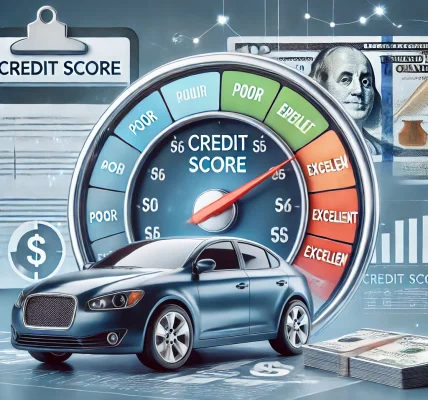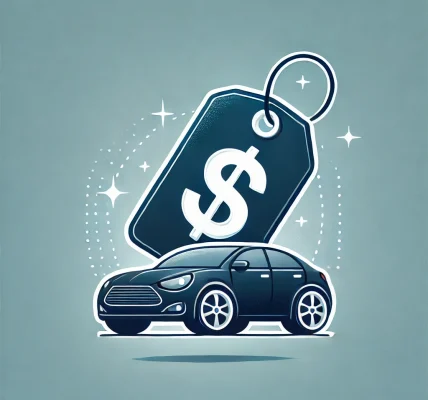Car insurance is essential for every vehicle owner, providing financial protection in case of accidents or damage. However, traffic violations and accidents can significantly impact your insurance costs. Insurance companies assess the risk associated with your driving behavior, and any infractions can lead to higher premiums.
In this DIY guide, we’ll explore how traffic violations and accidents influence car insurance premiums, which infractions have the biggest impact, and practical steps to minimize costs.
1. Understanding How Insurance Companies Calculate Premiums
Insurance companies determine your premium based on several factors, including: ✅ Driving history (accidents and violations) ✅ Age and experience ✅ Type of vehicle ✅ Location and frequency of driving ✅ Credit score (in some regions) ✅ Claim history
Among these, your driving record is one of the most significant factors affecting your insurance costs. Insurers view frequent violations or accidents as indicators of higher risk, leading to increased premiums.
2. How Traffic Violations Affect Car Insurance Premiums
Traffic violations are categorized as minor, major, and severe. Each category impacts your insurance differently.
a) Minor Violations
These infractions generally lead to small increases in premiums, but repeated offenses can cause significant hikes.
Examples: ✔️ Speeding (mild over the limit) ✔️ Failure to signal ✔️ Driving without headlights ✔️ Seat belt violations
🔹 Insurance Impact: A minor violation can increase premiums by 5-10%, depending on the insurer.
b) Major Violations
Major violations indicate a higher level of risk, leading to substantial premium increases.
Examples: ✔️ Running a red light or stop sign ✔️ Excessive speeding (20+ mph over the limit) ✔️ Reckless driving ✔️ Distracted driving (e.g., texting while driving)
🔹 Insurance Impact: Expect an increase of 15-30% or more on your premium.
c) Severe Violations (High-Risk Infractions)
These violations can place you in a high-risk driver category, leading to much higher premiums or even policy cancellation.
Examples: ✔️ DUI (Driving Under the Influence) ✔️ Driving without insurance ✔️ Hit-and-run accidents ✔️ Street racing
🔹 Insurance Impact: A severe violation can increase your premium by 50-100% or more. Some insurers may refuse to cover high-risk drivers altogether.
3. How Accidents Affect Car Insurance Premiums
Accidents impact insurance rates based on fault determination, severity, and frequency.
a) At-Fault Accidents
If you are responsible for an accident, your insurer may classify you as a high-risk driver, leading to premium increases.
🔹 Insurance Impact: An at-fault accident can raise premiums by 20-50%, depending on the severity.
b) Not-At-Fault Accidents
If another driver caused the accident, your premium may not increase. However, frequent claims (even if not your fault) can raise concerns for insurers.
🔹 Insurance Impact: Premiums might stay the same or increase slightly if claims are frequent.
c) Hit-and-Run Accidents
If you are the victim of a hit-and-run and do not have uninsured motorist coverage, you may have to pay out of pocket.
🔹 Insurance Impact: If you claim through your insurance, rates might rise 10-20%.
4. How Long Do Violations and Accidents Stay on Your Record?
Different insurers have varying policies, but in general: ✔️ Minor violations stay on your record for 3 years ✔️ Major violations stay for 5-7 years ✔️ DUI and reckless driving offenses may stay for 10+ years ✔️ Accidents can impact your premiums for 3-5 years
🔹 DIY Tip: Some insurers offer accident forgiveness, preventing premium increases for a first-time accident.
5. Steps to Reduce Car Insurance Costs After a Violation or Accident
a) Take a Defensive Driving Course
✔️ Many insurers offer discounts if you complete a certified defensive driving course. ✔️ This can help offset some of the premium increase.
🔹 DIY Tip: Check with your insurance provider to see if they accept driving courses for premium reductions.
b) Shop Around for Better Rates
✔️ If your premiums rise significantly, compare quotes from different insurers. ✔️ Some companies specialize in high-risk drivers and may offer better rates.
🔹 DIY Tip: Use online insurance comparison tools to find the best deal.
c) Increase Your Deductible
✔️ A higher deductible lowers your monthly premium. ✔️ Only choose this option if you can afford the out-of-pocket cost in case of a claim.
🔹 DIY Tip: If your premium has risen significantly, increasing your deductible could help balance costs.
d) Maintain a Clean Driving Record
✔️ Avoid further violations and drive safely. ✔️ Some insurers offer discounts for staying violation-free for a few years.
🔹 DIY Tip: Enroll in telematics-based insurance that tracks your driving behavior and rewards safe driving.
e) Ask About Discounts
✔️ Many insurers offer discounts for bundling policies, maintaining a good credit score, or installing safety devices.
🔹 DIY Tip: Review your policy annually and ask your insurer about all available discounts.
Conclusion
Traffic violations and accidents play a crucial role in determining your car insurance premium. Understanding how these factors impact your rates and taking proactive steps to minimize costs can save you a significant amount over time.
Key Takeaways:
✔️ Minor violations can increase premiums by 5-10%, while severe violations can raise rates by 50% or more. ✔️ At-fault accidents can cause premiums to rise 20-50%. ✔️ Violations typically stay on your record for 3-7 years. ✔️ Defensive driving courses, policy shopping, and maintaining a clean record can help lower premiums.
🔹 Final DIY Tip: Drive safely, follow traffic rules, and stay informed about your insurance policy to avoid unnecessary costs. 🚗💰



